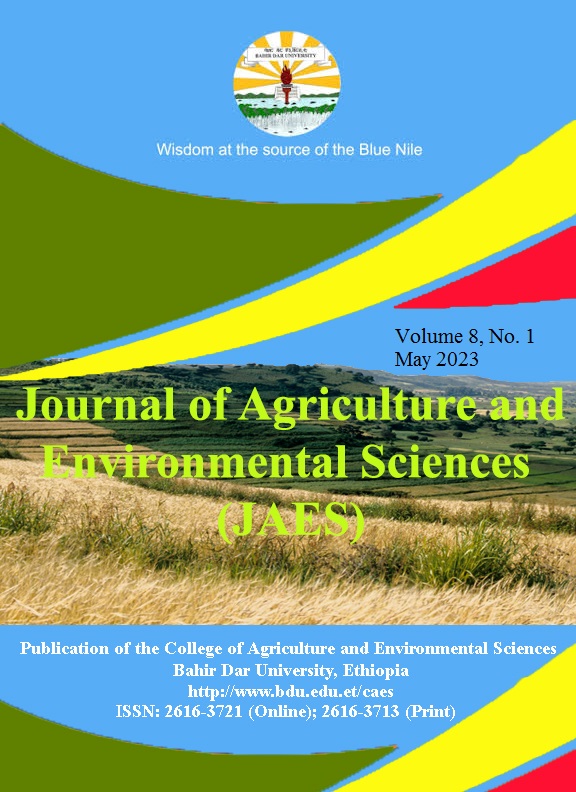Phenotypic characterization of the Gamo highland sheep population in Gamo Zone, South Ethiopia
Abstract
The study aimed to identify physical characteristics and prediction of live weight using linear body measurements of indigenous sheep types in two highland districts of the Gamo zone (Chencha and Qogota). Districts were purposively selected whereas farmers and animals were randomly selected. About 335 mature sheep (270 female and 65 male) were sampled for the body measurements. Both qualitative and quantitative data were analysed using SPSS version (20). Overall, the current findings revealed that mixed (62.50%) followed by black (21.90%) were the dominant coat colours with patchy coat colour patterns (56.30%). The majority of the sheep were horned (62.5%), curved horn (67.50%) and obliquely backward horn types (77.50%). Horizontal ear orientation (76.00%) and straight head profile (96.90) were predominantly observed. In general, about 71.60% of the sheep were hairy type and had straight crimp-curled hair (73.60%). The total hair coverage on the head, face, belly and leg was about 3.0%, 94%, 92.5% and 13.4%, respectively. About 55.20% of the study sheep revealed near hocks tail length. The mean body weight, body length, height at wither, chest girth, horn length, head length, hair length, ear length and tail length were 20.26±3.60 kg, 54.55±3.48, 55.13±3.83, 66.73±4.79, 9.42±7.46, 16.83±1.85, 7.41±3.12, 10.27±0.97 and 26.62±2.66 cm, respectively. In general, sex, district and age (dentition) significantly (P<0.05) affected linear body measurements. Body weight and most of the linear body measurements were positively correlated. Chest girth was the single best predictor of body weight (P<0.05). Molecular characterization of Gamo highland sheep is recommended for further advanced breeding strategies.
Copyright (c) 2023 Journal of Agriculture and Environmental Sciences

This work is licensed under a Creative Commons Attribution-NonCommercial-NoDerivatives 4.0 International License.
Authors who publish with this journal agree to the following terms:
- Authors retain copyright and grant the journal right of first publication with the work simultaneously licensed under a Creative Commons Attribution License that allows others to share the work with an acknowledgement of the work's authorship and initial publication in this journal.
- Authors are able to enter into separate, additional contractual arrangements for the non-exclusive distribution of the journal's published version of the work (e.g., post it to an institutional repository or publish it in a book), with an acknowledgement of its initial publication in this journal.
Authors are permitted and encouraged to post their work online (e.g., in institutional repositories or on their website) prior to and during the submission process, as it can lead to productive exchanges, as well as earlier and greater citation of published work (See The Effect of Open Access).


